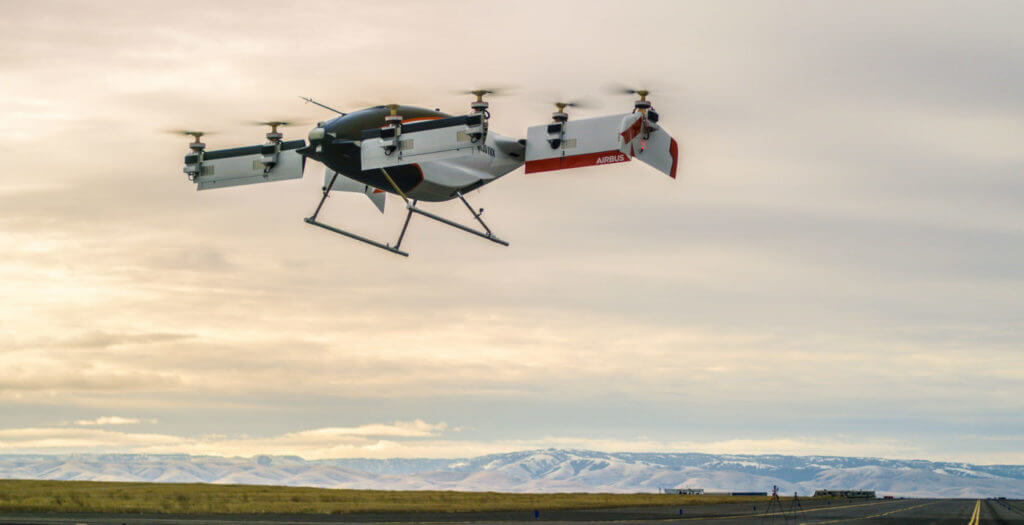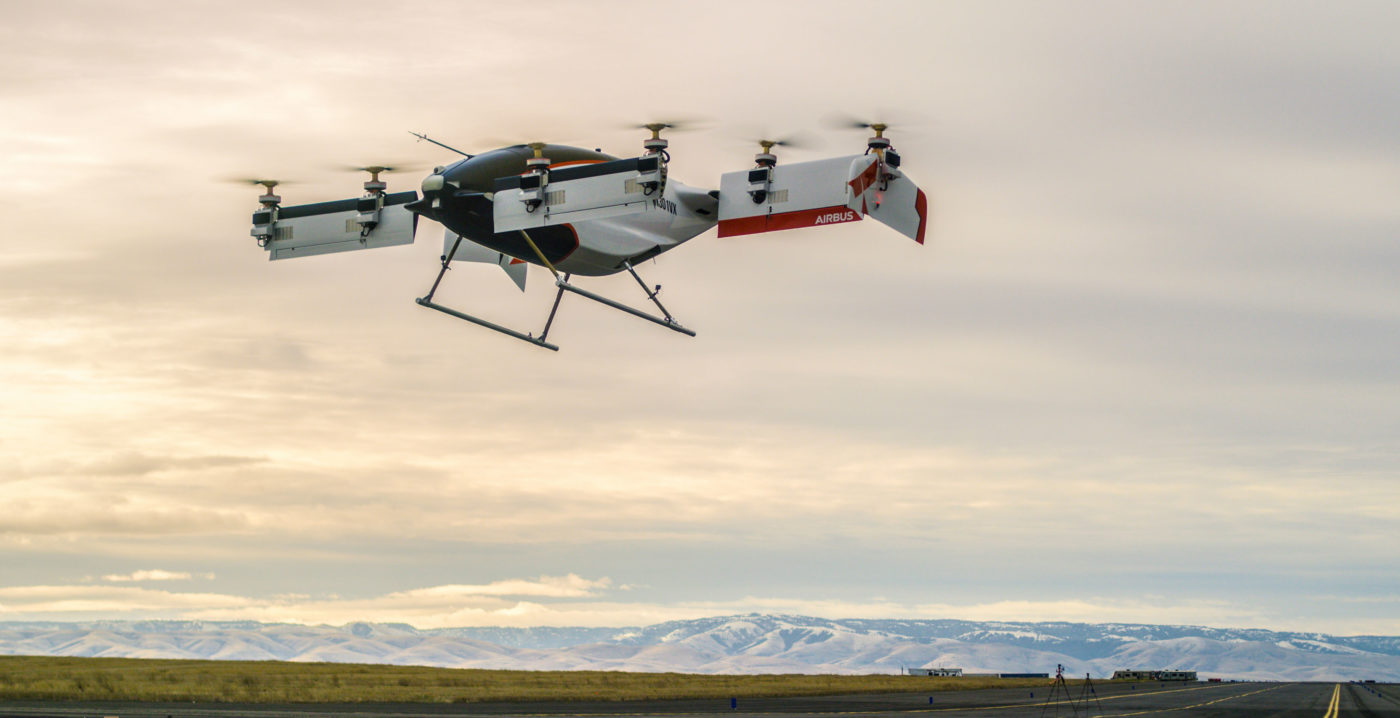Most developers of electric vertical takeoff and landing (eVTOL) aircraft believe that fleets of these air vehicles will eventually be whisking passengers through cities autonomously, with no human pilots at the controls. But even many champions of autonomy expect that it will take us a while to get there, and that along the way, eVTOL aircraft will be required to fly with human safety pilots who can take control of the vehicle if the autonomy fails.

A3, the Silicon Valley outpost of Airbus, has a different philosophy. As it works on its own tiltwing eVTOL project, called Vahana, A3 is advocating a “direct to autonomy” approach that would bypass human backup pilots altogether. According to Vahana project executive Zach Lovering, that’s because eVTOL air taxis simply can’t afford to have a passive pilot occupying one of a handful of seats — neither from an economic perspective, nor a safety one.
“A gradual path to autonomy where you have a safety pilot as a backup is, in my opinion, a dead end,” Lovering told Vertical. His argument will sound familiar to anyone who has studied the pitfalls of increasing cockpit automation; simply put, human pilots have a hard time staying alert when there’s nothing for them to do.
“The challenges you have there are you’re requiring that this safety pilot remain vigilant as you’re moving more and more tasks from that person’s responsibility and at the same time expecting them to respond to more and more obscure hazards,” Lovering explained.
“They’re effectively sitting there doing almost nothing for 99 percent of their job, and then the one percent of the time or 0.1 percent, whatever it happens to be, they are expected to react in a timely fashion to a failure mode or a situation that even the engineering design teams couldn’t predict. Which makes the training of that very difficult.”
Because the economics of the eVTOL air taxi model rely on affordable, mass-produced aircraft transporting high volumes of passengers, Lovering contends that it just isn’t feasible to have an expensive, highly trained pilot occupying a potential passenger seat — not to mention the additional engineering work involved in designing a suitable pilot interface system for an otherwise autonomous vehicle.
But that doesn’t mean that aircraft like Vahana will be flying autonomously through complex airspace from day one. Lovering suggested that the safety objectives behind a phased approach to autonomy can instead be achieved by constraining the environment in which eVTOL aircraft operate, and gradually expanding it as they prove their capabilities, similar to the approach being taken by self-driving car companies like Waymo.
“In that case, I’m not looking for universal autonomy. I’ve just officially constrained my operation, but I’m guaranteed that I can master those operations with a full autonomy system from the beginning,” he said.
“From my perspective, if autonomy is something that you care about, then [that’s] the thing you should go after. Building an aircraft with partial autonomy that has a pilot interface system that somehow has to communicate errors back to the pilot and deal with human psychology and vigilance decrement and all kinds of other things — that to me is a much, much, much greater challenge that’s going to be ultimately more expensive than just pursuing what you want from the beginning.”
Lovering said the Vahana program has been making significant progress since the first and second flights of the full-scale Vahana Alpha technology demonstrator on Jan. 31 and Feb. 1 of this year. Following those flights, the Vahana engineering team paused flight testing in order to upgrade the aircraft’s electric motors; the flight test campaign resumed this summer at the UAS test range in Pendleton, Oregon.
When Vertical spoke with Lovering in August, Vahana had completed more than 25 flights in hover mode and had just started testing the transition into forward flight, with the longest flight to date lasting around seven-and-a-half minutes.
Meanwhile, the Vahana team has been using small multicopter drones to test the aircraft’s sense-and-avoid systems, including the cameras and imaging radars used for cruise-stage hazard detection, and the lidar system used for landing. In one recent demonstration of landing-phase hazard detection, “the multicopter drone came down, detected the hazards automatically, avoided them, and then found an appropriate landing site,” Lovering said.
Vahana’s Alpha aircraft has a nominal weight of 1,600 pounds (725 kilograms) and has seating for one passenger. However, Lovering said there are no plans to fly a human in the Alpha technology demonstrator. That milestone will have to wait for the next Vahana design, which is targeting certification and production by the mid-2020s.
Lovering said that model will have between two and four passenger seats, but it has not yet been determined how closely the production aircraft will resemble the Alpha aircraft. “There are certainly a lot of benefits to the configuration that we’re flying today; however, we are considering other options as well,” he said.
And even the Beta version will log several hundred if not thousands of hours before it carries a human passenger. “One of the greatest things about having an autonomous aircraft is that I can do tons of flight testing without anybody onboard,”
Lovering said. “So putting the passenger onboard will be one of the last steps in the flight test program. Hopefully it’ll be me, but maybe that honor will go to our chief engineer.”
Lovering is aware that not everyone will share his enthusiasm for hopping aboard an autonomous aircraft. But he pointed out that elevators used to have human “pilots,” too. While the idea of an elevator without a human operator was once a scary proposal, today, most people would rather trust their lives to an automated elevator than take the stairs.
“If you had asked at least the last three or four generations the same question about different kinds of technology that went ‘autonomous,’ each generation expressed some fear about autonomy early on, but then. But then within one or two generations that fear is replaced by recognition of the social and safety benefits of the technology,” Lovering said.
“When we design vehicles like Vahana, while we still need to consider the current generation, we have to keep in mind that the primary users are the next generation and the one after that. For those generations, vehicle autonomy — from cars to aircraft — is going to be far more common than it is today.”









